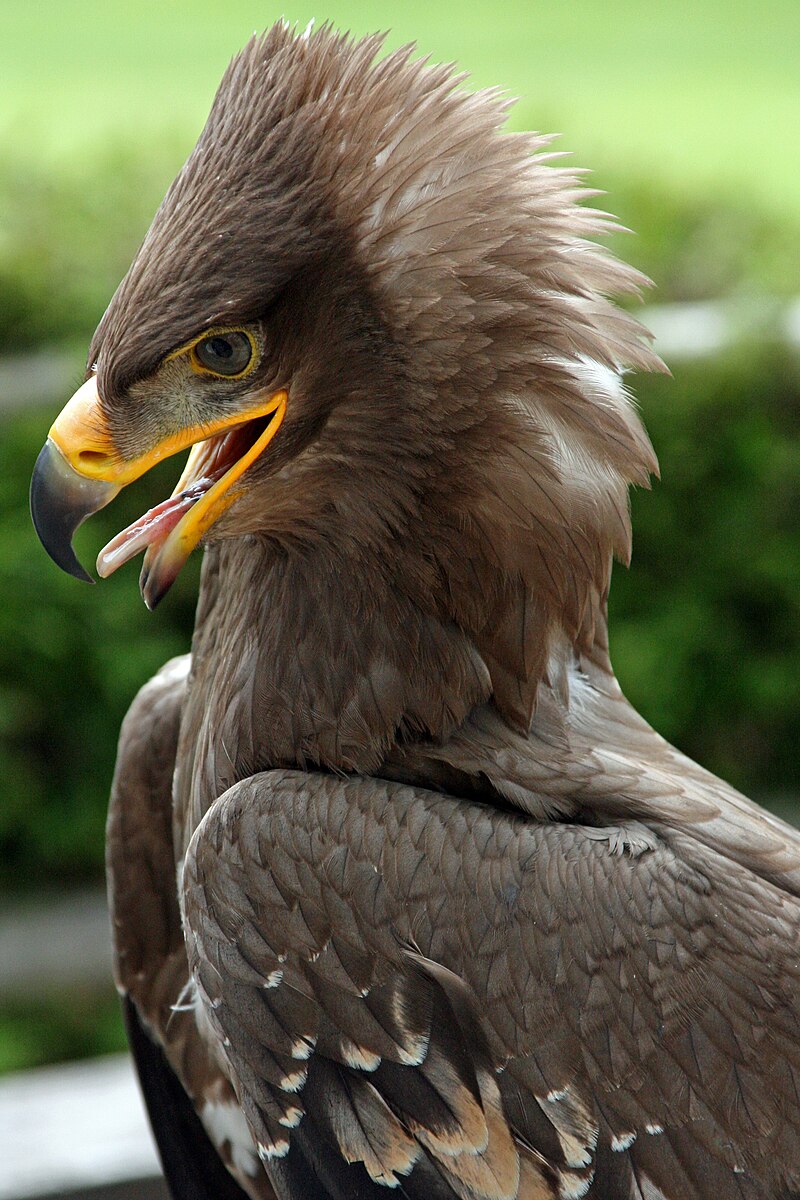The Steppe Eagle (Aquila nipalensis) is a large bird of prey found in parts of Europe and Asia. While these majestic birds may appear similar at first glance, there are several key differences between the males and females that can help you identify them. In this comprehensive guide, we’ll explore the various physical and behavioral characteristics that distinguish the sexes.
Size Differences
One of the most reliable ways to differentiate between male and female Steppe Eagles is by their size. Females are typically larger and heavier than their male counterparts. On average, female Steppe Eagles can be up to 15% larger than males.
| Characteristic | Male Steppe Eagle | Female Steppe Eagle |
|---|---|---|
| Body Length | 66-81 cm (26-32 inches) | 71-86 cm (28-34 inches) |
| Wingspan | 175-215 cm (69-85 inches) | 190-230 cm (75-91 inches) |
| Weight | 2.5-4.5 kg (5.5-10 lbs) | 3.0-5.5 kg (6.6-12 lbs) |
It’s important to note that these measurements can vary depending on the individual bird and the specific population being observed. However, the general trend of females being larger than males is consistent across the species.
Plumage Differences
 Image source: Steppe Eagle by Fimb
Image source: Steppe Eagle by Fimb
While size is the most reliable way to distinguish between male and female Steppe Eagles, there are also some subtle differences in their plumage and coloration.
Adult Males
Adult male Steppe Eagles typically have a more uniform brown coloration across their body, with little to no variation in shades. Their wings and tail feathers may appear slightly darker than the rest of their body.
Adult Females
In contrast, adult female Steppe Eagles often have a slightly paler or more washed-out appearance compared to the males. They may also have a more distinct pattern of lighter and darker feathers on their wings and tail.
It’s important to note that these plumage differences can be quite subtle and may not always be a reliable way to identify the sex of a Steppe Eagle, especially in younger birds or individuals with similar coloration.
Behavioral Differences
In addition to physical characteristics, there are also some behavioral differences between male and female Steppe Eagles that can aid in identification.
Vocalizations
Females are generally more vocal than males, with their calls being deeper and more resonant. However, Steppe Eagles are relatively quiet birds, so this method of identification may not always be reliable.
Nesting and Breeding
During the breeding season, female Steppe Eagles are typically more involved in nest-building and incubation duties, while males may be more active in defending the territory and providing food for the female and chicks.
Subspecies Debate
It’s worth noting that there is some ongoing debate among researchers about whether Steppe Eagles should be classified as two separate subspecies or as a single, monotypical species. Some studies have suggested that there are differences in size and coloration between eastern and western populations, while others have argued that these differences are better explained as clinal variations due to environmental factors.
Conclusion
Identifying the sex of a Steppe Eagle can be a challenging task, but by focusing on the key differences in size, plumage, and behavior, you can increase your chances of accurately distinguishing between male and female birds. Remember that these characteristics can vary, and in some cases, more advanced techniques like DNA analysis or endoscopic examination may be necessary for a definitive determination.

